
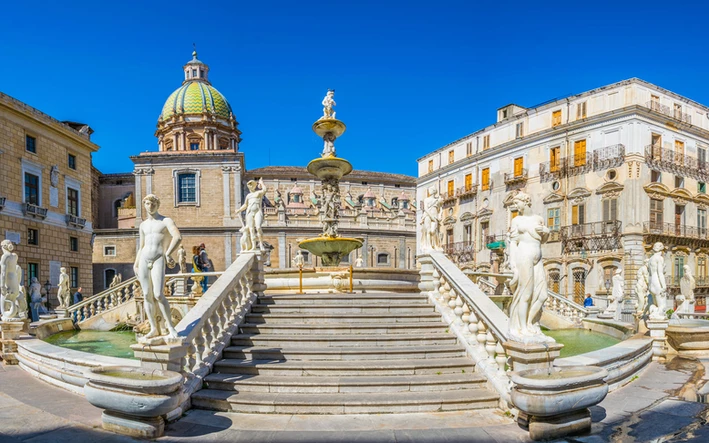
The impressive fountain in late Renaissance style has an eventful history. Originally commissioned for a private Tuscan villa in the 16th century, the imposing structure found its destination in Palermo. Like hardly any other monument, it attracts attention and has even caused heated tempers in the past.
by: Adriana Cuffaro | 17 Nov 2021
In the centre of the old town, south of the Quattro Canti on Via Maqueda, is the famous Fontana, an outstanding feature at 133 metres in circumference and 12 metres high.
It catches the eye not only because of its generous dimensions, but also because of its design: concentric water basins on different levels connected by stairs, a central fountain column and numerous unclothed statues of deities and nymphs. While the depiction of revealing figures causes little to no sensation nowadays, it was different in the past.
The Palermitans found this scandalous and called the fountain "Fontana della Vergogna", i.e. "Fountain of Shame". Tempers have long since calmed, but the fountain's epithet remains to this day. According to historical lore, however, there is - apart from the bare facts - another reason for the less than charming nickname. Find out more about the "Fontana della Vergogna" case in the next section.
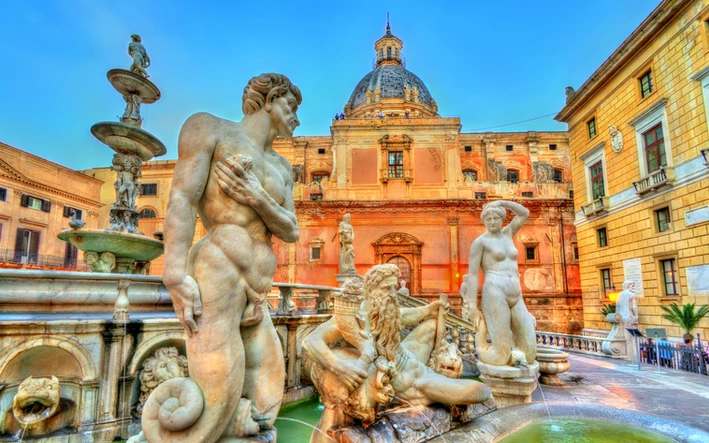
Then as now, the waste of public money was denounced and met with great resentment among the population. This is what happened in 1574, when the imposing fountain was purchased by the Palermo Senate for about 30,000 scudi*. The monument arrived in Palermo disassembled into 644 individual parts and had to be erected piece by piece on a specially levelled area. This cost not only time, but above all money.
The Palermitan people, plagued by famine and misery, had little understanding for this high expenditure and - according to tradition - shouted "shame, shame" when the members of the Senate left the building. It is quite understandable that this circumstance should have led to the epithet. In view of the difficult living conditions, the people must have perceived this great cultural investment as a pure provocation.
As a result, vandalism and damage to the marble statues occurred more and more often in the past. So the fountain was fenced in with bars and lavishly restored at the end of the 20th century. Since then, the monument has shone in its full splendour and attracts numerous tourists every year. But why did it happen that the Fontana travelled from Tuscany to Sicily?
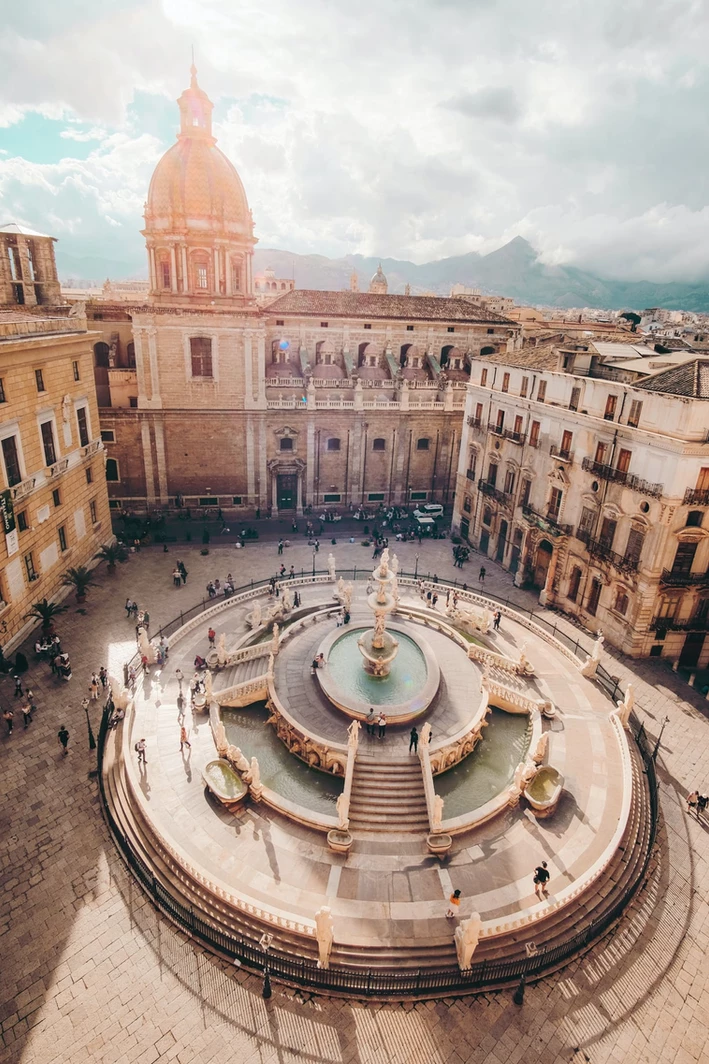
It all began when Don Pedro Àlvarez de Toledo, Spanish Viceroy of Naples, commissioned the sculptor Francesco Camillani to create a fountain for his Florentine estate. But one year before the building was completed, in 1553, the Viceroy died.
His son Luigi Àlvarez de Toledo decided to sell the fountain to the city of Palermo. Whether he sold the elaborate work of art because he had debts or no use for it cannot be said with certainty. This does not change anything about the result, because the fountain's name was Destinazione Palermo.
Built on the newly created Piazza Pretoria, this square and the Fontana owe their name to Palazzo Pretoria, Palermo's city hall, which is located in the immediate vicinity. But let's come back to the impressive Fontana, which we will take a closer look at in the following sections.

If you are strolling through Palermo and your walk takes you past the Fontana Pretoria, it is worth stopping for a moment to take a closer look at the impressive Renaissance building. Take some time, walk around the elliptically designed fountain and discover the diverse design elements.
When we visit the Fontana from the outside in, the first thing that catches our eye are the eight outer torsos: colossal female and male deities. These are supposed to symbolically represent the boundaries of space and time, like an entrance to the heavenly door. A beautiful idea to start your discovery tour to the centre of the Fontana here.
After climbing the first steps, you reach the first level. Here, during your tour, you will encounter four smaller basins where allegorical statues of Palermo's rivers Oreto, Papireto, Gabriele and Maredolce are located.
Have you ever been to the Piazza Navona in Rome? The idea of using rivers as allegorical figures in fountain design is also found in the Four Rivers Fountain, located in the famous square. It is believed that its builder, sculptor Gian Lorenzo Bernini, was inspired by the Fontana Pretoria.
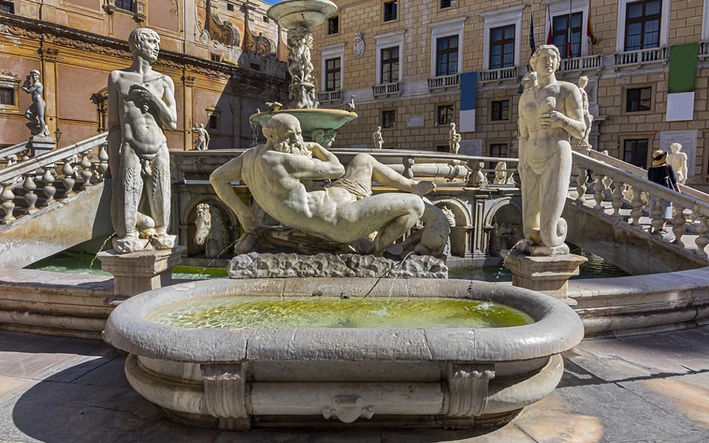
Ready for the next level? Before you climb the nine steps to the top, you can marvel at statues from Greek and Roman mythology on the banisters. Diana, Adonis, Venus, Apollo, Mercurius and other figures of ancient rank and fame line the elegant balustrades. At the top, a three-tiered fountain column with water features awaits you.
Rich in mystical and animal figures, such as geese, turtles and sea monsters, the column forms the focal point of the fountain complex.
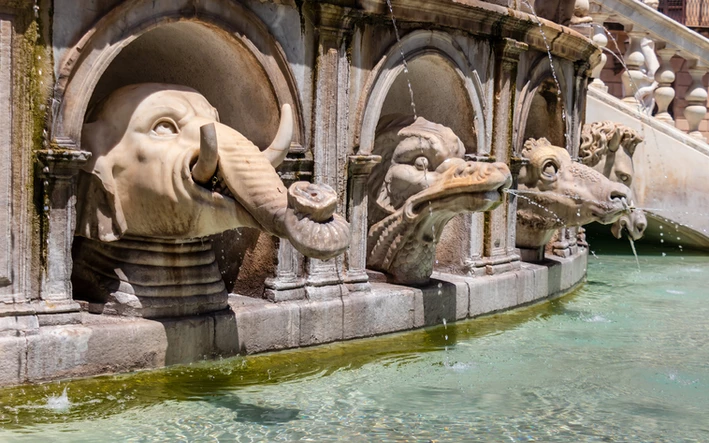
The top of the column also deserves a closer look: enthroned here with watchful eyes is the Genius of Palermo, emblem and patron saint of the city. According to tradition, he dates back to pre-Romanesque times and is one of the oldest mythological images of the city.
Interesting fact about the Genius statue: Camillani, builder of the fountain, originally had a statue of Bacchus in mind. Since the Fontana found its way to Palermo, Antonino Veneziano, a poet from Monreale, was commissioned at the time to interpret the structure according to regional aspects. He identified - quite the local patriot - Bacchus as the genius and so the Roman god of wine and intoxication became the patron saint of Palermo.
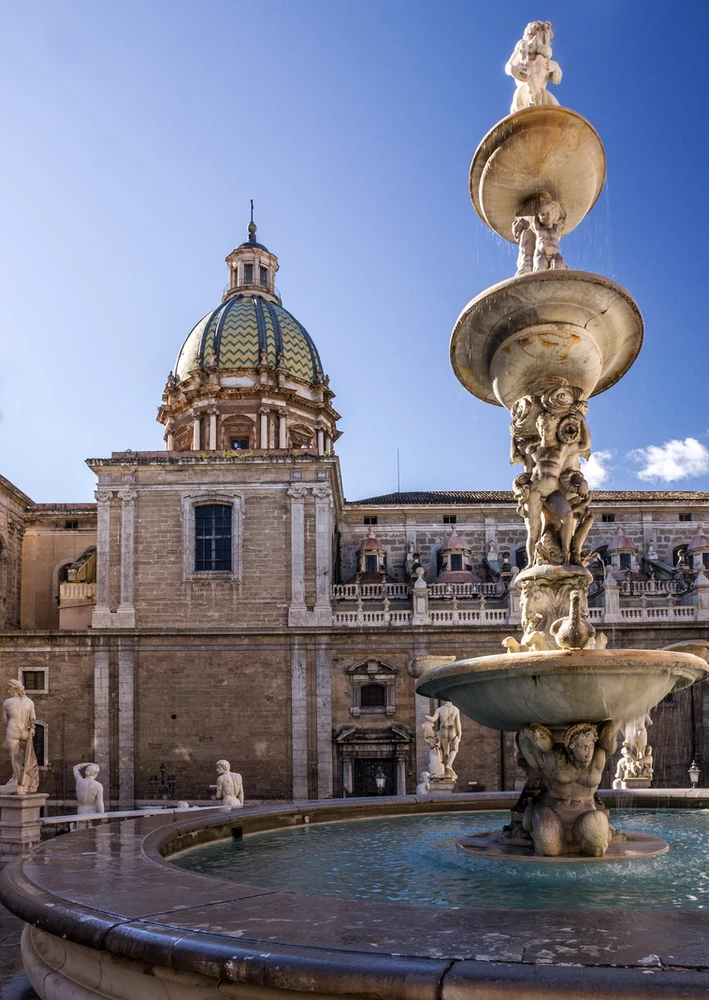
Have we made you curious? The Fontana di Pretoria is just one of many places you can marvel at in Palermo. The capital of the Sicily region was named Italian Capital of Culture in 2018 by the Minister of Cultural Heritage and Tourism - and rightly so, we think. Visit Palermo, learn about its multi-faceted history and explore the northern Sicilian port city on your own. A presto!

Many travellers want quality accommodation with an authentic atmosphere. At Boutique BnB Dolcevita we offer modern rooms and warm service so you can feel like a local for a while.
More info on the Boutique BnB Dolcevita